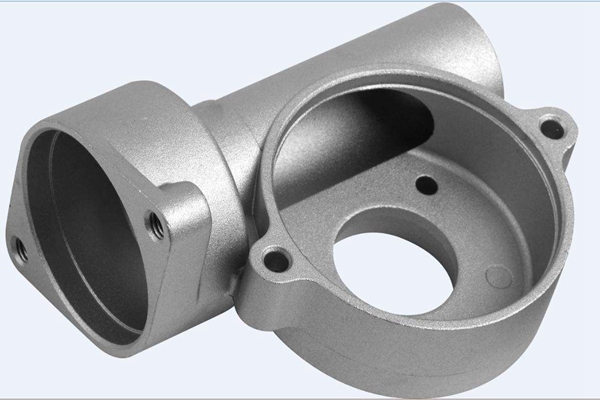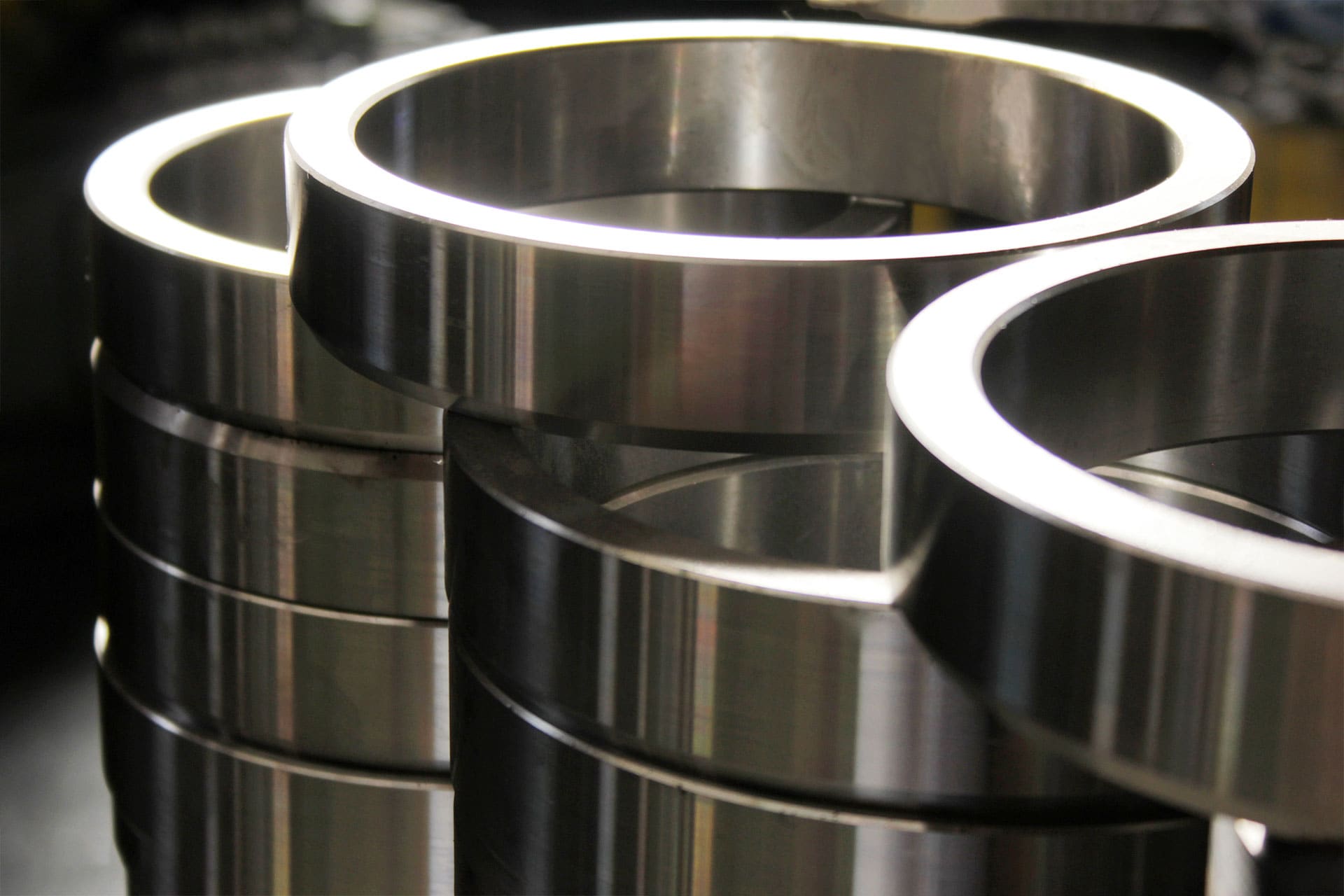Exploring the Versatile Uses and Applications of Aluminum Castings in Modern Industries
Aluminum spreadings have actually ended up being essential to different contemporary markets because of their unique homes. They use considerable advantages in weight reduction, thermal conductivity, and deterioration resistance. From automotive developments to applications in durable goods and building and construction, their flexibility is exceptional. Yet, real extent of their effect prolongs beyond instant advantages, hinting at broader ramifications for sustainability and effectiveness. What lies ahead for aluminum castings in an ever-evolving commercial landscape?
Automotive Industry Innovations
The auto market has increasingly welcomed light weight aluminum spreadings to improve vehicle performance and efficiency. By making use of aluminum, manufacturers can generate lighter components, which contribute to enhanced fuel economic climate and decreased exhausts. Secret applications include engine blocks, transmission situations, and architectural components, where the material's strength-to-weight proportion provides durability without adding excess weight.
Aluminum castings additionally supply exceptional thermal conductivity, which aids in far better warmth dissipation, thereby boosting engine efficiency. Innovations in casting modern technologies, such as die casting and sand spreading, allow the production of complicated geometries, enabling for cutting-edge layouts that optimize area and performance.
The recyclability of light weight aluminum aligns with sustainability goals in the vehicle market, advertising eco-friendly techniques. As the industry remains to innovate, making use of light weight aluminum castings is most likely to broaden, driving further developments in automobile design and performance.
Aerospace Advancements and applications
While the aerospace industry proceeds to focus on weight decrease and fuel performance, light weight aluminum castings have arised as an important product selection for numerous applications. Their lightweight nature, paired with high strength-to-weight proportions, permits significant enhancements in airplane efficiency and performance. Aluminum spreadings are generally made use of in structural parts, such as body structures and wing components, where minimizing weight is vital.
Recent developments in aluminum casting technologies, consisting of enhanced alloy formulas and precision casting strategies, have actually even more boosted the material's efficiency capabilities. These developments allow the production of intricate geometries and elaborate styles while preserving structural integrity. In addition, light weight aluminum's outstanding rust resistance guarantees durability and integrity in harsh aerospace atmospheres.
As the aerospace market progressively embraces sustainability, light weight aluminum spreadings use a recyclable remedy that aligns with environment-friendly techniques, making them a crucial element in the advancement of next-generation aircraft.
Durable Goods and Everyday Products
As customers progressively seek lightweight yet durable materials for daily products, light weight aluminum castings have actually acquired popularity in various customer goods. The distinct properties of light weight aluminum, including its resistance to deterioration and excellent thermal conductivity, make it a suitable choice for products like cooking equipment, house appliances, and outside gear. Aluminum cast pots and pans give also warm circulation, improving cooking effectiveness. Additionally, making use of aluminum in things such as bike frames and luggage ensures a balance in between stamina and mobility. Suppliers value light weight aluminum spreadings for their convenience, as they can be easily built right into complex shapes while maintaining structural integrity. The ability to recycle aluminum without degrading its residential properties lines up with growing customer choices for sustainable products. Generally, light weight aluminum spreadings are important to the production of long lasting, useful, and cosmetically pleasing durable goods, fulfilling the demands of contemporary way of lives.
Building And Construction and Architectural Makes Use Of
Aluminum castings have actually come to be a necessary component in building and architectural layout, particularly because of their strength and lightweight nature. These buildings make light weight aluminum a perfect selection for numerous applications, consisting of architectural elements, facades, and ornamental functions - Aluminum Castings. Home builders and designers progressively use aluminum castings for window structures, doors, and roof covering systems, boosting both capability and aesthetics. The material's resistance to corrosion additionally extends its lifespan, lowering upkeep costs and guaranteeing toughness in diverse environmental conditions
Light weight aluminum can be quickly molded right into intricate styles, permitting for cutting-edge architectural expressions. Its convenience promotes the creation of customized pieces that satisfy particular style requirements, from elaborate railings to complex assistances. As sustainability comes to be a concern, aluminum's recyclability includes in its allure in green building and construction practices. In general, aluminum castings are revolutionizing the building market by supplying light-weight, resilient, and aesthetically attractive remedies.
Electronic and electric Elements
Aluminum spreadings play an essential role in the production of light-weight electric enclosures, which boost mobility and effectiveness in various applications. In addition, their superb thermal conductivity makes them ideal for warm sinks, ensuring peak performance and long life of digital components. Additionally, aluminum's conductive homes add to its use in various electrical conductors, highlighting its importance in modern technology.
Light-weight Electric Rooms
Light-weight electric enclosures play a vital duty in shielding sensitive electronic parts from ecological elements and physical damage. Constructed from aluminum castings, these units are valued for their strength-to-weight proportion, making them perfect for various applications across markets. Their lightweight nature help in minimizing total system weight, which is crucial in mobile and mobile electronics. Furthermore, light weight aluminum's rust resistance improves sturdiness, expanding the lifespan of the enclosed elements. The ability to mold and mildew light weight aluminum right into intricate forms enables for tailored layouts, dealing with details requirements while ensuring reliable warmth dissipation. In addition, these rooms can be easily incorporated right into existing systems, offering versatility and versatility in contemporary technological settings. Overall, lightweight aluminum units considerably contribute to the efficiency of digital gadgets.
Warm Sinks and Conductors
While lots of materials are utilized in digital components, light weight aluminum castings attract attention for their effectiveness in heat monitoring as warmth sinks and conductors. Their superb thermal conductivity permits reliable warmth dissipation, which is crucial in avoiding the overheating of digital tools. Aluminum's lightweight nature further improves its viability for applications where weight is a substantial element, such as in aerospace and vehicle sectors. In addition, light weight aluminum castings can be quickly molded into complicated shapes, offering design flexibility for maximizing thermal efficiency. The deterioration resistance of light weight aluminum also contributes to the long life and integrity of these components in different atmospheres. As technology advances and gadgets become extra small, the need for reliable heat monitoring options, like aluminum spreadings, proceeds to grow.
Marine Market Usage
The aquatic market progressively counts on light weight aluminum castings for their outstanding toughness and corrosion resistance. These buildings make aluminum an optimal choice for various applications, including boat read this article hulls, engine components, and marine hardware. The lightweight nature of aluminum castings allows boosted fuel performance and less complicated ability to move in boat, which you can look here is important for both leisure and industrial vessels.

Light weight aluminum spreadings additionally supply significant price benefits as a result of their lengthy life expectancy and reduced upkeep demands, reducing the general operational expenses for marine operators. Furthermore, the flexibility of aluminum permits intricate styles that can fulfill certain performance needs.
Manufacturers in the aquatic market utilize advanced casting techniques to generate complex shapes, making certain that parts fulfill extensive safety and performance requirements. As the need for high-performance marine vessels grows, light weight aluminum spreadings are placed as a crucial material in boosting the capability and durability of aquatic equipment.
Sustainability and Recycling in Aluminum Spreading

Aluminum Recycling Process
Recycling aluminum plays a crucial function in lessening ecological influence and saving sources within the casting industry. The aluminum reusing process starts with the collection of scrap aluminum, which can consist of old components, making waste, and post-consumer items. This scrap is after that arranged, cleansed, and shredded right into small items to pop over to this web-site promote melting.
Once prepared, the light weight aluminum scrap is thawed in a heating system at reduced temperatures than key aluminum production, significantly decreasing power consumption. The liquified aluminum is after that cast right into ingots or various other forms for reuse in different applications - Aluminum Castings. This closed-loop system enables for the effective recuperation of aluminum, maintaining its residential or commercial properties while minimizing the need for virgin materials. The recycling procedure is a critical element of lasting techniques in aluminum casting.
Environmental Advantages
While aluminum spreading plays an important function in different industries, its environmental advantages are specifically impressive regarding sustainability and source conservation. The light-weight nature of light weight aluminum contributes to power performance in transportation, lowering gas intake and emissions. Furthermore, aluminum spreading assists in the use of recycled products, significantly reducing the energy needed for manufacturing compared to key aluminum. This reusing process decreases waste and minimizes the environmental influence linked with mining and refining basic materials. In addition, light weight aluminum is 100% recyclable without destruction of its residential properties, promoting a lasting lifecycle. By picking aluminum casting, sectors can substantially minimize their carbon impact while promoting resource performance, making it a crucial choice in the search of eco-friendly manufacturing techniques.
Closed-Loop Systems

Regularly Asked Inquiries
What Are the Trick Conveniences of Aluminum Castings Over Other Materials?
Aluminum spreadings provide light-weight residential properties, outstanding deterioration resistance, and high strength-to-weight proportions. They can be conveniently built right into intricate forms, give excellent thermal and electric conductivity, and are affordable, making them more effective over several alternate products.
How Is the Light Weight Aluminum Spreading Refine Eco Pleasant?
The light weight aluminum casting process is eco friendly because of its recyclability, reduced power consumption, and lowered waste production. Its ability to use recycled materials minimizes the carbon footprint, advertising sustainability within making techniques.
What Prevail Challenges in Light Weight Aluminum Casting Production?
Typical challenges in light weight aluminum spreading production include preserving dimensional precision, taking care of thermal contraction, stopping problems like porosity and inclusions, making sure proper mold and mildew design, and enhancing production efficiency while minimizing material waste and environmental influence.
Just How Do Aluminum Castings Contrast in Price With Various Other Manufacturing Approaches?
Aluminum castings generally use competitive prices contrasted to other manufacturing techniques, especially for tool to high-volume manufacturing. Their lower preliminary tooling expenses and effective product usage can lead to favorable economics over time.
What Future Fads Are Expected in Aluminum Casting Innovation?
Future patterns in light weight aluminum casting technology are anticipated to include improvements in automation, boosted alloy compositions, improved reusing techniques, and the combination of 3D printing, all aimed at enhancing performance, minimizing prices, and reducing ecological effect.
Current developments in aluminum casting innovations, including improved alloy solutions and precision casting methods, have actually further improved the product's performance capabilities. Light weight aluminum spreadings have actually become an essential element in construction and building design, especially due to their toughness and lightweight nature. The aluminum reusing procedure begins with the collection of scrap light weight aluminum, which can consist of old components, producing waste, and post-consumer items. When prepared, the light weight aluminum scrap is thawed in a heater at reduced temperatures than primary aluminum production, greatly reducing power consumption. In addition, light weight aluminum spreading promotes the usage of recycled materials, greatly decreasing the power needed for manufacturing contrasted to main aluminum.